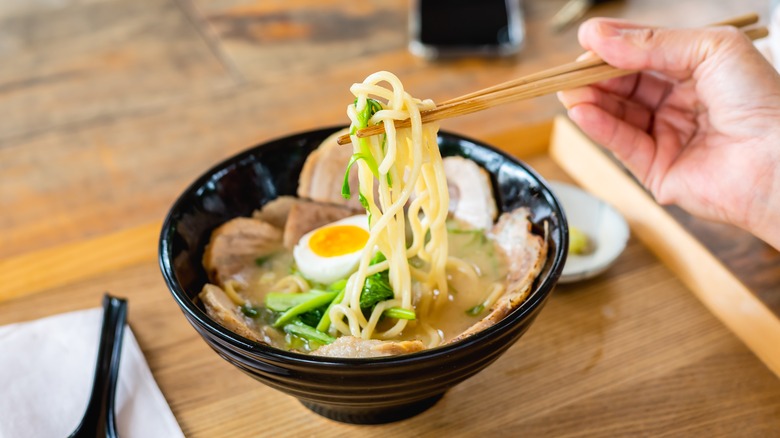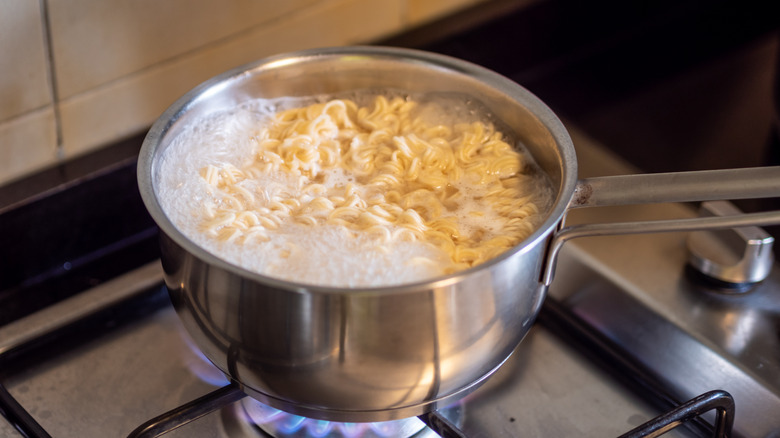The Absolute Best Way To Reheat Ramen
Robert Stephens, founder of Best Buy's Geek Squad, lauded Top Ramen as "the international symbol for struggle," notes Commercial Interrogator. But just because the dish is simple and accessible doesn't mean it should be underestimated. As Stephens alludes, it's the fuel of the underdog. There are few things more satisfying than mastering a bowl of perfect instant ramen at home — except, perhaps, chowing down on a steaming hot bowl of noodles at your favorite ramen restaurant. Everything ramen-adjacent is pretty satisfying, come to think of it.
But even when the spirit is willing, sometimes the flesh is weak. This is especially true when it comes to comfort food like ramen; it's easy to have eyes bigger than your stomach. If you find yourself with a big bowl of leftovers, don't despair — nothing is going to waste here. There's an easy way to reheat ramen so that those second-day noodles hit like day one — and it has everything to do with how you store your leftovers in the first place.
Grab a saucepan and some plastic containers
For optimal freshness, Asian culinary guide Bite My Bun recommends storing the broth and noodle parts of your ramen in separate airtight containers. That way, your noodles won't absorb the liquid from the broth and become soggy, oversaturated, or dull.
To reheat your ramen like a pro, Cooking Chew suggests keeping the broth and noodles separate through the reheating process, as well. To do it, warm the broth in a pot over low heat until it just begins to boil. Another reason to store your noodles separately from your broth, it says, is so that you can experiment by adding new tastes to the broth. At this point, as your broth reheats, feel free to dice up herbs, eggs, or vegetables to spice up the flavor profile. So if you want to stir in a pat of butter for an extra rich texture, go for it!
Next, Survival Freedom suggests adding in any other ingredients your ramen might be topped with, like bean sprouts or pork belly. The noodles should be the last thing added to the pot. Then, turn up the heat and add in your noodles. Just let them boil for a minute or two until thoroughly heated through to avoid overcooking, as suggested by Cooking Chew.
Also, be sure to keep an eye on the clock. While most meals enjoy a slow reheat, with Ramen, time is of the essence.

